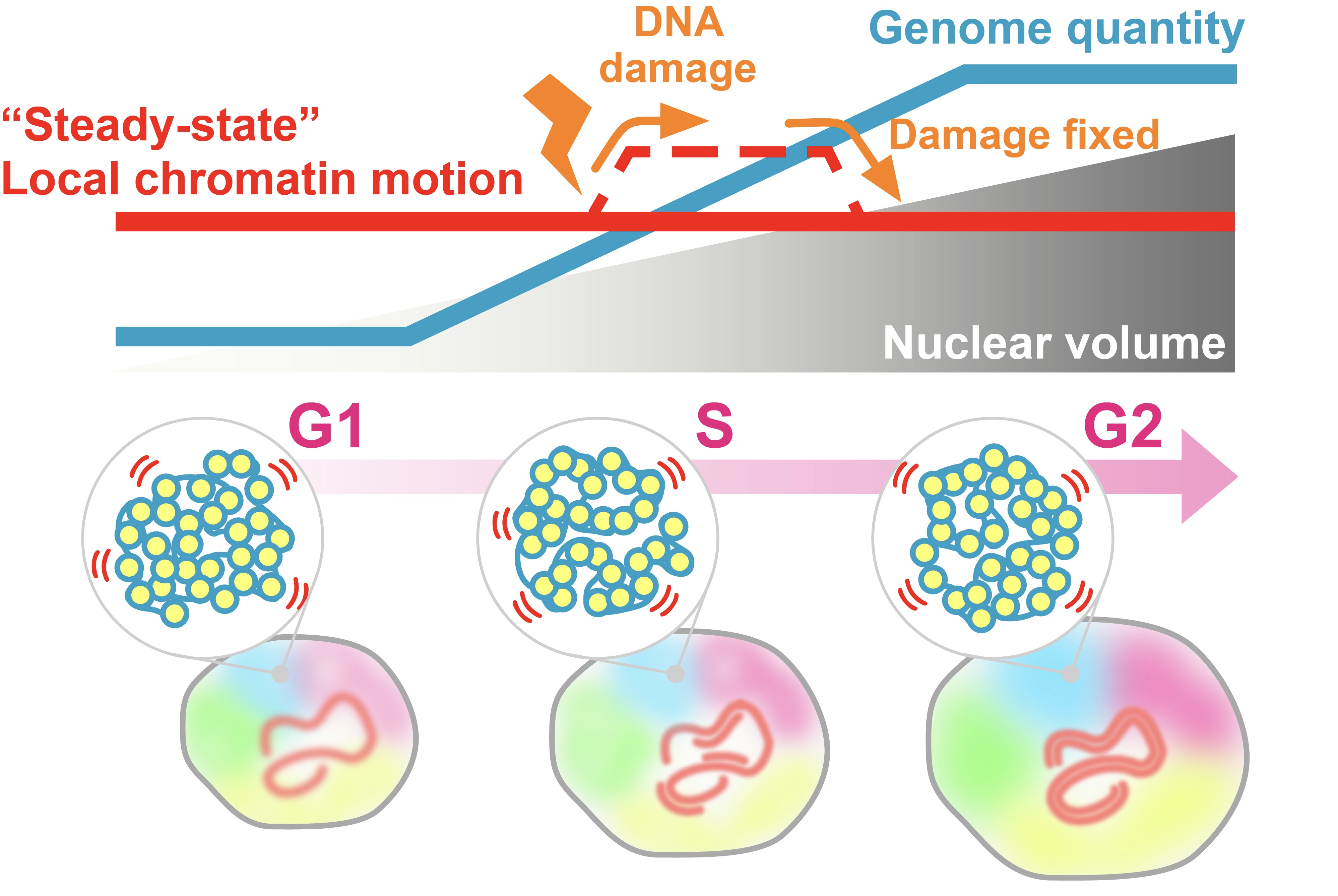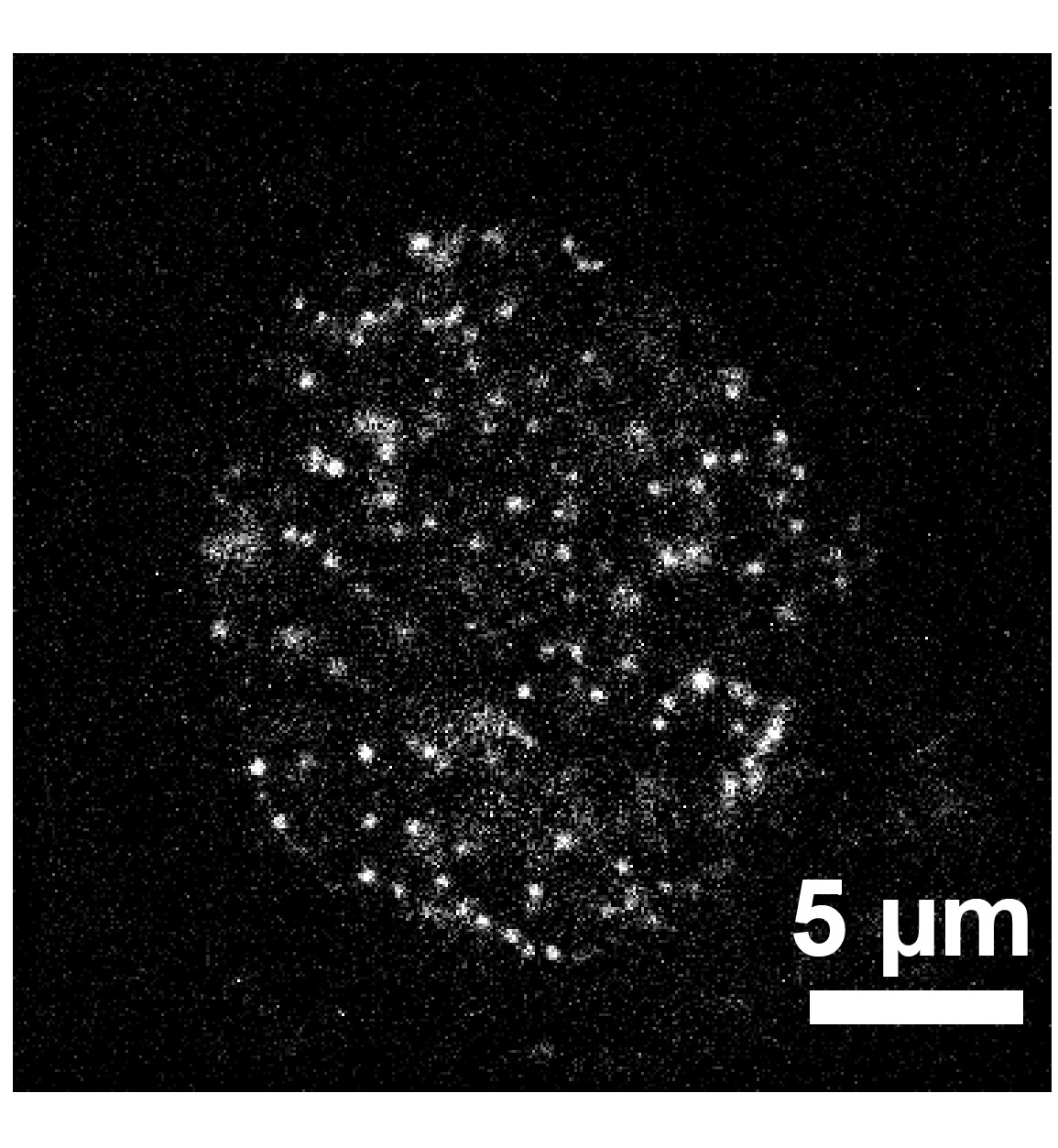| Accession | GMS-65-5
URL copied to the clipboard |
| Title | Single-nucleosome imaging reveals steady-state motion of interphase chromatin in living human cells |
| Submit date | 2023-08-30 10:59:39 |
| Last update date | 2023-08-30 13:46:12 |
| Contact | GMSuite GENOMEMODALITY gmsuite AT hgc.jp The University of Tokyo |
| Sharing | |
| Total file size | 44.98 MB |
| Keywords | Chromatin motion Interphase Cell cycle Fractal polymer Brownian dynamics |
| Experiment type | Cell lines Flow cytometry Single-nucleosome imaging microscopy Fractal polymer model Hi-C |
| Summary | Dynamic chromatin behavior plays a critical role in various genome functions. However, it remains unclear how chromatin behavior changes during interphase, where the nucleus enlarges and genomic DNA doubles. While the previously reported chromatin movements varied during interphase when measured using a minute or longer time scale, we unveil that local chromatin motion captured by single-nucleosome imaging/tracking on a second time scale remained steady throughout G1, S, and G2 phases in live human cells. This motion mode appeared to change beyond this time scale. A defined genomic region also behaved similarly. Combined with Brownian dynamics modeling, our results suggest ...... [read more: https://pubmed.ncbi.nlm.nih.gov/35658044/ ] |
| Citation(s) | Iida S, Shinkai S, Itoh Y, Tamura S, Kanemaki MT, Onami S, Maeshima K. Single-nucleosome imaging reveals steady-state motion of interphase chromatin in living human cells. Sci Adv. 2022 Jun 3;8(22):eabn5626. doi: 10.1126/sciadv.abn5626. Epub 2022 Jun 3. PMID: 35658044; PMCID: PMC9166292. https://pubmed.ncbi.nlm.nih.gov/35658044/ |
| Organism | Human |
| Cell (Tissue) | HeLa |
| Protocol | HeLa S3 cells HT-1080 cells HCT116 RPE-1 H2B-HaloTag expression To obtain cells arrested in the G1 phase, HeLa, HCT116, or HT-1080 cells were initially plated at 2.0 × 105 cells/ml, left for 1 day, and then treated with 20 μM lovastatin (M1687, LKT Laboratories) for 24 hours (figs. S3 and S6). For cell cycle synchronization of HeLa cells in the S or late S-G2 phase, double thymidine block and release were performed as follows (fig. S3). Cells (1.0 × 105 cells/ml) were plated with 3 mM thymidine (T9250-1G, Sigma-Aldrich) for 18 hours, released into a thymidine-free medium for 9 hours, and again treated with 3 mM thymidine for 17 hours for the G1/S arrest. The arrested cells were then released into a thymidine-free medium for 4 hours (S phase) or 8 hours (late S-G2 phase). |
| Data processing | DeltaVision Elite microscopy with an Olympus PlanApoN 60× objective (NA 1.42) and an sCMOS camera. MetaMorph software (Molecular Devices) or NIS-Elements (Nikon). 10 Brownian dynamics simulations with 100,000 times iteration steps. Polymer conformation data were output every 100 iteration steps. Then, we analyzed the averaged MSD for all monomers and the angles for the 10,000,000 (= N × 100,000/100 × 10 ) trajectory points. We used VMD to visualize polymer dynamics |
| [396] Figure10_2022_03_27.jpg
Steady-state local chromatin motion during interphase cell cycle despite of increase in DNA amount and nuclear volume image/jpeg 1.03 MB MD5: 435c6a74334d6df97c122d625e947690 |
| [394] Figure1_2022_04_18.jpg
An image of single-nucleosomes in living cells image/jpeg 541.14 KB MD5: 7a782f81edb1bfc8be6841f2804091c1 |
| [395] Figure3_2022_03_27KM_0401iida2.jpg
3D-reconstituted image of a nucleus image/jpeg 137.03 KB MD5: e4037822f631cf13d894ef7837c90ad6 |
| [400] Combined_Mov4_Mov5.mp4
Local chromatin motion is similar between G1 (left) and G2 (right) though nuclear volume grows double from G1 to G2 video/mp4 12.28 MB MD5: 11a7eb6b4cd82dc87abbd19464883b96 |
| [398] Movie1_2.mp4
A movie of single-nucleosomes in living cells video/mp4 12.10 MB MD5: ecc7b4f24df48b8e4ebc70c67da5596e |
| [397] Movie2.mp4
A computational simulation of chromatin Brownian dynamics video/mp4 5.73 MB MD5: feb04e2d9dcc4a829f0ad742b5c3840b |
| [399] Movie3.mp4
3D-reconstituted image of a nucleus video/mp4 13.16 MB MD5: c8d4fc4e65cc34c31b094d0988a9a4ce |


